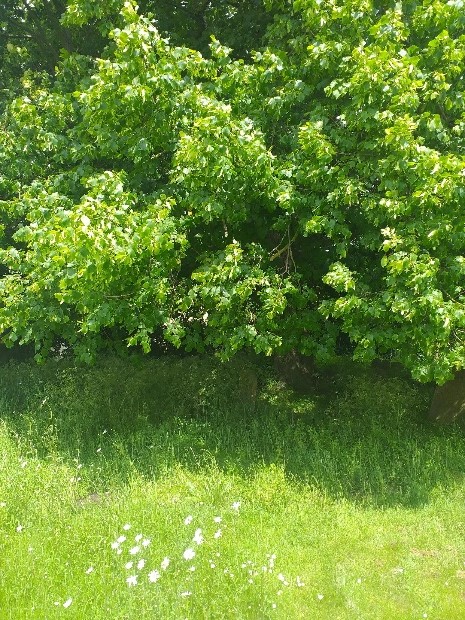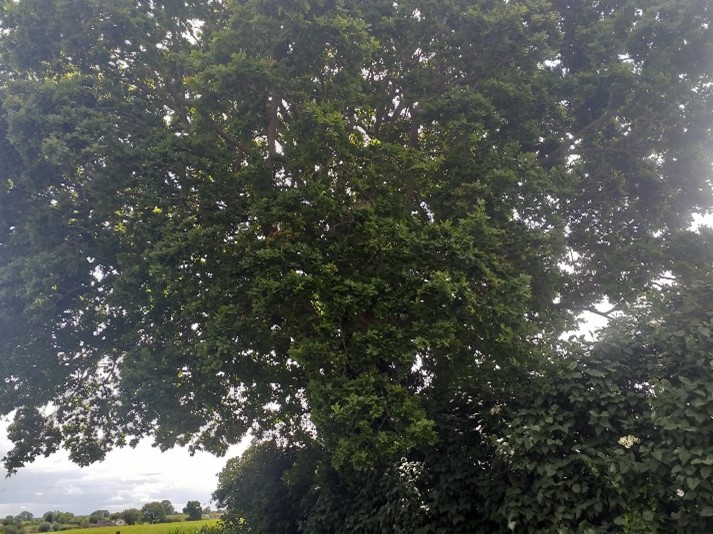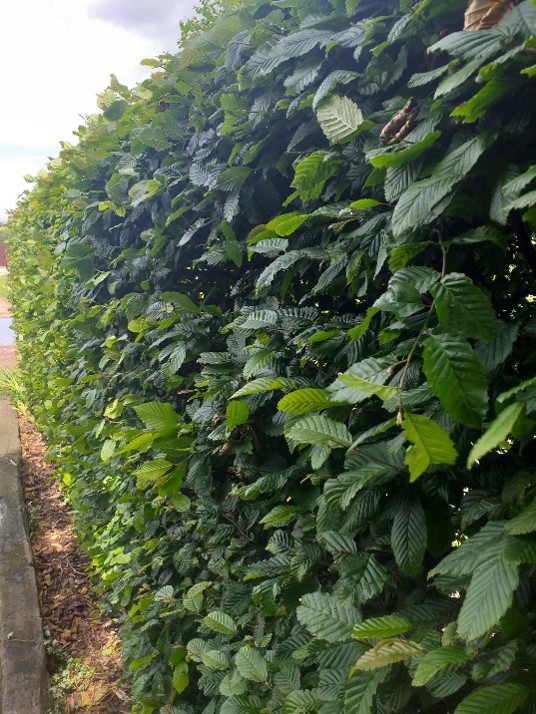Noise reduction by tree planting, and the added benefits
Biophilic noise refers to the integration of natural sounds into landscape environments to enhance human well-being.
In a landscape that is dominated by man-made noises such as airplanes, motor traffic, neighbours’ hobbies, and human noise we require peace at times.
The concept is rooted in biophilia, which is the idea that humans have a connection to nature. In this blog, we shall review the best trees to plant to suppress noise and provide screening to unwanted noise or views.

Lime Trees
This is small leaf lime. The leaves flutter in the slightest breeze creating a soothing noise all around the tree and at some distance from the tree. Watching the leaves flutter is a real pleasure on the eye.
These trees can reach a large size unless managed by a pruning regime such as pollarding.
Being deciduous its benefits are from April to October with screening for noise reduction and biophilic benefits.
Birch Trees
This multi-stemmed Jaquemontii is a fast-growing species. This tree has grown from six feet to 12 feet in 7 years. It will have white bark in the winter months when there are no leaves and the leaf rustle is pleasant in light breezes from April to October providing noise suppression and a calming presence. One downside is the high pollen levels associated with this tree in early spring


oak trees
This English oak can reach a large size, it has many benefits such as the wildlife habitat it creates and seasonal interest of seed such as acorns and a great autumn leaf colour. This tree also provides a great calming noise with leaf rustle.
Horn beam and deciduous hedges
Decidual hedges such as hornbeam, beech, and lime are the best for noise suppression. They can be used as pleached screens if height is required. Once they are established the wind blows through the hedge and the rustle of leaves is calming and noise-suppressing

What not to use
Avoid conifers or semi evergreen trees/shrubs such as privet. They do not create much of a barrier against unwanted noise nor produce many pleasant sounds of their own.

The benefits of biophilic noise
Stress Reduction: Natural sounds can help reduce stress and promote relaxation. Even the impact of raindrops on leaves can create that relaxed feel.
Improved Focus: Certain nature sounds can improve concentration and cognitive performance. School grounds would benefit from this type of planting.
Enhanced Mood: Exposure to natural sounds can boost mood and overall emotional well-being. The exposure to nature at home from these trees can improve mental health.
Better Sleep: Natural sounds can improve sleep quality by masking disruptive noises. Hospitals would benefit from these trees.
The use of biophilic noise can have numerous benefits. They can be ideally used when planting around yoga retreats, health spas or along the boundaries to communal areas such as pub gardens. If you live near a road, it is an ideal solution to create noise reduction.
Applications of Biophilic Noise
Urban Planning and Architecture: Integrating biophilic noise in urban settings and buildings to create more pleasant and healthy environments.
The health benefits in the urban landscape with placement planting along road edges or between buildings and roads are necessary.
Workspaces: Using natural sounds in offices to increase productivity and reduce stress among employees. The view from the workplace alongside the noise created when the window is open or when you need a break is necessary for recovery.
Healthcare: Implementing biophilic noise in hospitals and clinics to promote healing and reduce anxiety in patients. Within the hospital or care landscape such as spas, yoga retreats, or wedding venues
Education: Incorporating natural sounds in schools and universities to create a more conducive learning environment.

Examples of Biophilic Noise within trees
Birdsong: Chirping and singing of birds.
Wind: The sound of wind rustling through trees and foliage.
Insects: Buzzing of bees, crickets, and other insects. Such as bees in Lime trees.
Rain: The sound of raindrops hitting leaves on trees
Implementing Biophilic Noise
To effectively incorporate biophilic noise, consider the following steps:
Identify Suitable Sounds from the trees: Choose sounds that are pleasant and not overly disruptive.
Sound scaping and planting within the landscape: Strategically place trees in outdoor areas to create an immersive natural sound environment.
Customization: Allow users to customize the type and volume of biophilic noise according to their preferences.
Biophilic noise can transform spaces by reconnecting people with nature, leading to numerous psychological and physiological benefits. If you would like help trasforming your space into one that brings you peace please contact us.









